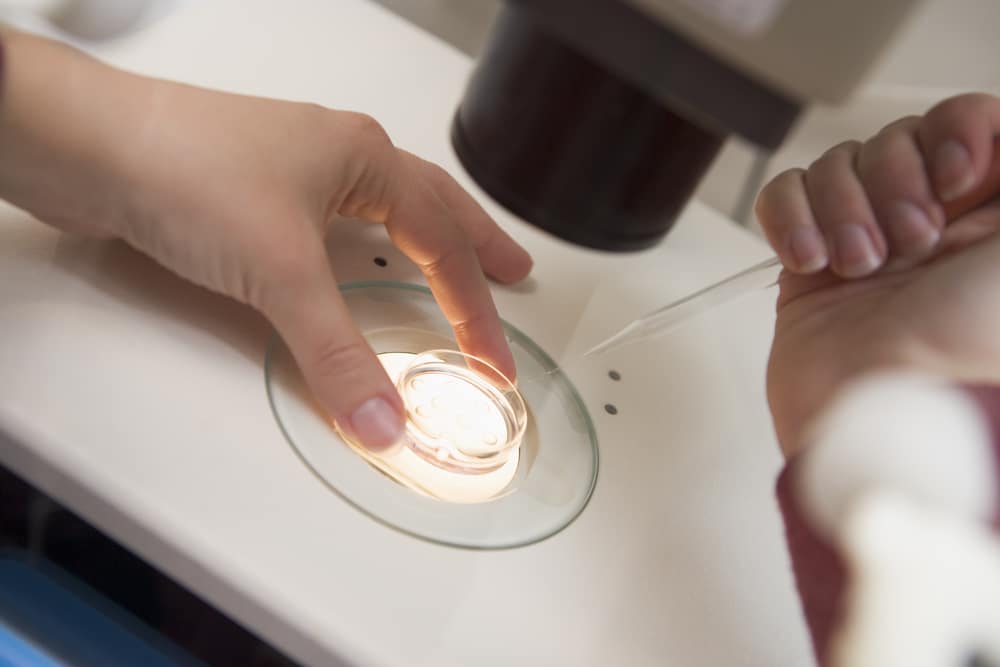Infertility is a global problem that affects millions of people from all walks of life, regardless of religious background and ethnicity. The World Health Organization estimates that 48 million couples and 186 million individuals experience infertility worldwide.1,2,3 Included in the statistics are Muslims, who constitute the second-largest religious group in the world—Islam. Currently, more than 24% of the world’s population identify as Muslims.
In recent years, significant advancements in assisted reproductive technology (ART) made it possible for infertile couples and individuals to conceive. ART techniques include in vitro fertilization, artificial insemination, as well as freezing of eggs and sperm, embryo transfer, and embryo selection. These treatments could be controversial in the context of religion, such as in Islam.
Present-day Islam and Its View on Infertility
Islam is a religion but is also a way of life. Islamic teachings encompass various aspects of daily life, including social, educational, political, economic, and international perspectives. Scholars of Islam often emphasize that Islam is a religion not of hardship but of ease.4 Islam recognizes that infertility is a serious hardship, hence attempts to address infertility are encouraged in Islam.5
Present-day Islam has two main branches – Sunni and Shia. Each branch has its distinct set of views and teachings on jurisprudence, theology, and ethics. A huge majority of Muslims in the world are Sunni, comprising 90% of entire Muslim population. The remaining 10% are Shia. It is important to note that these 2 branches of Islam have striking disparities with regard to ART.5,6
This article will guide you on the general Islamic views, as well as the differences between the Sunni and Shia perspectives, regarding assisted reproduction.

Does Islam Allow Assisted Reproduction?
In general, yes, Islam permits ART as long as the procedure involves a couple that has a valid marriage in accordance with Islamic law (Shari’ah). ART is strictly not permitted in cases of self-imposed single parenthood and LGBTQ+ couples who desire of having children. In addition, ART is frowned upon if there are no medical justifications for the procedure.5 The succeeding sections will outline the views of Islam on specific ART procedures.
Artificial Insemination
Artificial insemination is allowed in Islam, provided that it is for a married couple and that both sperm and egg come from this couple.5 It should be noted, however, that masturbation is not accepted in Islam.7 Sperm acquisition must therefore be carried out with the wife.
Artificial insemination that involves sperm or egg donation from a third-party donor is not allowed. Most religious scholars on Islam consider third-party donation as a form of adultery, owing to the concept of introducing a third party into the husband-and-wife dyad, which is considered sacred in Islamic laws.8
IVF and embryo transfer
In vitro fertilization (IVF) refers to the collection of sperm and egg and their subsequent fertilization in the laboratory. IVF is permitted in Islam, provided that the sperm and egg come from a married couple.5
Embryo transfer is the procedure that follows IVF and this involves implantation of the embryo formed in the lab into the uterus of the woman. As with other ART techniques, embryo transfer is allowed as long as it is done within the context of a valid marriage.5
It is not uncommon for IVF to yield more than one embryo. Viable embryos that were not implanted may be frozen for future use. The general view is that frozen embryos may be thawed and implanted to the uterus of the wife whenever the married couple desires to have another child.5
The view on embryo transfers once the husband has died is a bit controversial. One paper explains that frozen embryos should only be implanted into the uterus during the duration of the marriage. Since death effectively terminates the contract of marriage according to Islamic law, embryo transfer after the husband’s death is considered illegal. In this sense, embryo transfer after divorce is also illegal.9 Another paper, however, mentioned a case in which permission for embryo transfer was once granted to a widow after her husband’s death, based on the circumstances that bearing her husband’s child would greatly be beneficial for the widow’s wellbeing.10
Freezing of eggs and sperm
Freezing of eggs and sperm, through cryopreservation, is allowed when the husband or wife would go through radiotherapy or chemotherapy. The eggs or sperm may then be used for IVF and subsequent implantation after the course of radiotherapy or chemotherapy, given that the husband and wife are within a valid marriage during the time of ART.5
Preimplantation Genetic Diagnosis (PGD)
Preimplantation genetic diagnosis (PGD) is an emerging ART procedure in which embryos formed during IVF are checked for the presence of genetic defects. Through PGD, selective abortion is avoided as PGD is performed early in course of the pregnancy – just 3 days after fertilization. The embryos could be screened for the presence of aneuploidies, hemophilia, cystic fibrosis, or muscular dystrophy.10,11,12
According to Muslim scholars, PGD for genetic disorders is allowed in Islam, as this technique is not classified as an alteration of God’s creation and is instead considered as a medical treatment. PGD is also preferred over prenatal diagnosis since PGD is performed when the embryo is at the 8-cell stage and way before the 120th day of gestation, the time of breathing the soul.12

«Islam permits ART as long as the procedure involves a couple that has a valid marriage in accordance with Islamic law.»
Contrasting Sunni and Shia Views on Assisted Reproduction
The two main branches of present-day Islam, Sunni and Shia, have differing views on some ART procedures.
Sperm, egg or embryo donation
Any form of sperm, egg, or embryo donation for ART is strictly prohibited in Sunni Islam. Donation of eggs, sperm, or embryo would entail the introduction of a third person – the donor – in the dyad of husband and wife, and this is considered similar to adultery. If ART still used the sperm from a donor despite the prohibition, the husband will still be considered as the legal father even if he is not the biological father. In the case of a donated egg, the birth mother will be the legal mother, even if she is not the biological mother.13
The view on sperm and egg donation is different in Shia Islam. While many Shia religious experts share the view of Sunni Muslims that third-party donation should not be permitted, some Shia religious authorities allow the procedure. For instance, Ayatollah Ali Khamene’i, the Leader of the Islamic Republic of Iran, declared in the late 1990s that third-party donations of sperm and egg are permitted. Iran, a known Shia Muslim country, also legitimized embryo donation.5,6
Sex selection
Sex (gender) selection is generally not allowed in Sunni Islam, as gender selection is said to be only up to God. However, in November 2007, The Islamic World League released a legal resolution allowing gender selection only for medical reasons. Few Sunni scholars also deem sex selection acceptable to balance the sex ratio in the family for very limited cases, such as when a wife has given birth to 6 daughters and the husband has a desperate need to have a son.5 A recent resolution issued by the Al-Azhar Religious Institution declared that sex selection techniques are not allowed for the first child but is permissible if the family has already two children of the same sex.4
Meanwhile, in Shia Islam, there are no objections to sex selection techniques. Sex selection methods are allowed for medical reasons; for non-medical purposes, there must be a necessity to justify the procedure.14
Surrogacy
Surrogacy is strictly prohibited in Sunni Islam, as it entails the involvement of a third-party surrogate. As mentioned above, introduction of a third party in the sacred dyad of a married couple is considered adultery.6
In Shia Islam, surrogacy is allowed, as it is included in the resolution issued by Ayatollah Ali Khamene’I in the late 1990s. Surrogacy is now widely practiced in Iran.5,6
Learn more about the assisted reproduction techniques listed here by consulting a trusted fertility expert who will walk you through the different fertility treatments and procedures available. Fertility experts will help you understand the nitty-gritty of ART and will also help you find the perfect fertility clinic that can make your IVF dreams come true.
References
- Mascarenhas, M., Flaxman, S., Boerma, T., Vanderpoel, S., & Stevens, G. (2012). National, regional, and global trends in infertility prevalence since 1990: a systematic analysis of 277 health surveys. PLoS Med, 9(12), e1001356.
- Boivin, J., Bunting, L., Collins, J., & Nygren, K. (2007). International estimates of infertility prevalence and treatment-seeking: potential need and demand for infertility medical care. Human Reproduction, 22(6), 1506–1512.
- Rutstein, S., & Shah, I. (2004). Infecundity, Infertility, and Childlessness in Developing Countries.
- Sallam, H. N., & Sallam, N. H. (2016). Religious aspects of assisted reproduction. Facts, Views & Vision in ObGyn, 8(1), 33–48. http://www.ncbi.nlm.nih.gov/pubmed/27822349%0Ahttp://www.pubmedcentral.nih.gov/articlerender.fcgi?artid=PMC5096425
- Chamsi-Pasha, H., & Albar, M. A. (2015). Assisted reproductive technology: Islamic Sunni perspective. Human Fertility, 18(2), 107–112. https://doi.org/10.3109/14647273.2014.997810
- Inhorn, M. C. (2011). Globalization and gametes : reproductive ‘ tourism ,’ Islamic bioethics , and Middle Eastern modernity. Anthropology & Medicine, 18(1), 87–103. https://doi.org/10.1080/13648470.2010.525876
- Hoseini, S. S. (2017). Masturbation: Scientific Evidence and Islam’s View. Journal of Religion and Health, 56(6), 2076–2081. https://doi.org/10.1007/s10943-013-9720-3
- Inhorn, M. C., & Tremayne, S. (2016). Islam, Assisted Reproduction, and the Bioethical Aftermath. Journal of Religion and Health, 55(2), 422–430. https://doi.org/10.1007/s10943-015-0151-1
- Alaro, A. (2012). Assisted Reproductive Technology (ART): The Islamic Law Perspective. In B. Arda & V. Rispller-Chaim (Eds.), Islam and Bioethics (pp. 95–108). Ankara University.
- Serour, G., & Dickens, B. (2001). Assisted reproduction developments in the Islamic world. International Journal of Gynecology & Obstetrics, 74, 187–193.
- Harun, H., Rahman, F., Samori, Z., & Ramly, F. (2016). Ethical Aspect of Preimplantation Genetic Diagnosis: An Islamic Overview. Contemporary Issues and Development in the Global Halal Industry, 281–290.
- El-Hashemite, N. (1997). The Islamic View in Genetic Preventive Procedures. The Lancet, 350, 223.
- Fadel, H. (2002). The Islamic Viewpoint On New Assisted Reproductive Technologies. Fordham Urban Law Journal, 30(1), 147–157.
- Dezhkam, L., Dezhkam, H., & Dezhkam, I. (2014). Sex selection from Islamic point of view. Iran J Reprod Med Vol, 12(4), 289–290.
